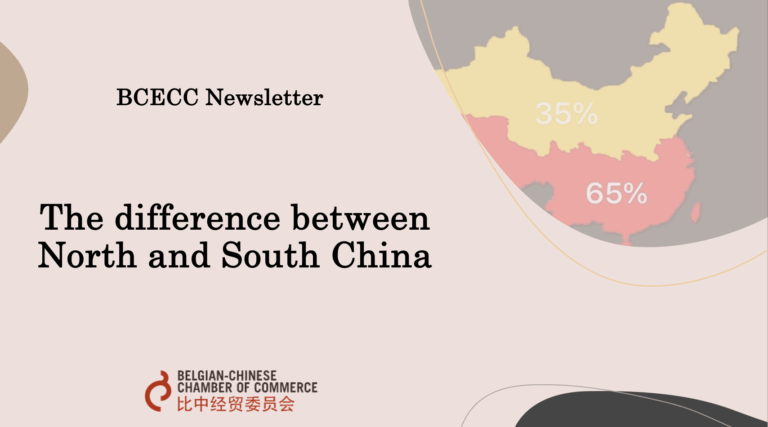China is often perceived as one country with one culture and one market, yet beneath the surface lies a rich diversity shaped by geography, history, and tradition. One of the most enduring and impactful divisions is the one between North and South China. These regional differences influence not only language and food, but also the way people conduct business. For investors, entrepreneurs, and anyone working in or with China, understanding these regional contrasts is essential for developing effective business strategies across China’s massive and multifaceted market.

Geographical and climatic differences
Northern China is defined by its dry, cold winters, vast plains, and reliance on wheat-based agriculture. In contrast, Southern China’s subtropical climate, lush mountains, and intricate river systems have made it the ideal location for rice cultivation. For businesses, these geographical contrasts can influence various aspects, from supply chain logistics to consumer behavior. For example, the need for state-subsidized heating in the North during winter affects energy consumption patterns, while the lack of centralized heating in the South shapes how energy-efficient products are marketed. Additionally, the region’s infrastructure varies: Northern China’s terrain is suited for long-distance freight and rail, supporting industries like heavy manufacturing and raw materials, while the Southern coastal areas, with easy access to global shipping routes, are key to China’s export-driven manufacturing sectors.
Cultural and historical differences
History has carved equally deep grooves into the business mentalities of each region. Northern China has traditionally been the center of political power. From imperial dynasties to the Communist government, cities like Xi’an and Beijing were and remain administrative capitals. This historical focus on governance has fostered a culture that values formality, hierarchy, and institutional authority. In business, this translates into a preference for top-down decision-making, formal protocols, and a strong reliance on government policy.

In contrast, Southern China has a rich history as a region of trade, migration, and commercial exchange. Cities like Guangzhou, a key port during the Maritime Silk Road, created a culture that is more commercially pragmatic and risk-taking. Entrepreneurs in the South generally speaking tend to be more adaptable, open to experimentation, and quicker to pivot in response to market changes. These regional differences influence how business decisions are made and how people communicate. In the North, formal titles, government ties, and established procedures often carry more weight in negotiations and business dealings. In the South, personal relationships (guanxi), flexibility, and negotiation skills tend to be more important in business.

Economic differences and key industries
The economic contrast between North and South China is shaped by history, geography, and policy. During the planned economic era in the mid-20th century, the North experienced a strong industrial boom, thanks to its rich natural resources. With support from centralized planning and Soviet assistance, industries like the steel, coal, and energy sectors thrived. However, this success led the region to rely heavily on capital investment and state-led development, leaving less urgency to adopt early market reforms.
In contrast, the South’s access to coastlines and river systems gave it a natural advantage in trade and transportation. When China began introducing reforms in the late 1970s and 1980s, southern regions like Guangdong province and Zhejiang province embraced the market more quickly. This resulted in the rise of private enterprise, export-oriented industries, and later, high-tech innovation zones.

According to data from the National Bureau of Statistics, the total GDP of China’s northern region (including Northeast China, North China, Northwest China and some central provinces) accounts for about 35% of the national GDP, while the southern region (including East China, South China, Southwest China and some central provinces) accounts for about 65%. Furthermore, in recent years, the economic growth rate in the south has generally been faster than that in the north, resulting in a widening of the economic gap between the north and the south.
Since 2012, as China shifted its national focus toward innovation-driven and high-quality growth, the strengths and limits of these two models became more visible. The South adapted itself swiftly, with cities like Shenzhen and Suzhou becoming global hubs for technology and advanced manufacturing. Meanwhile, the North continues to play a key role in infrastructure, state-owned enterprise reform, and heavy industry, though some regions have faced challenges in adapting to the new growth paradigm. Today, Beijing is the only northern city that remains in China’s top 10 economic rankings, while southern cities dominate the list with strong performances in trade, technology, and manufacturing. Because of this divide, foreign companies may find different opportunities depending on the region: industrial partnerships and policy-driven projects are more common in the North, while fast-paced tech ventures and consumer markets thrive in the South.
Dealing with regional diversity in China
For companies looking to succeed in China, understanding the regional differences between North and South China is crucial. These contrasts, ranging from climate and infrastructure to culture, communication, and business etiquette, directly influence consumer behavior, supply chains, and operational strategies. A one-size-fits-all approach rarely works in such a complex and diverse market. Instead, businesses that localize their strategies—adapting their marketing campaigns, product features, pricing models, and management styles to fit local norms—are far more likely to thrive. North and South China may belong to the same country, but they represent very different environments for doing business. Regional awareness isn’t just cultural sensitivity, it’s a smart business strategy.
At the Belgian-Chinese Chamber of Commerce (BCECC), we support Belgian companies in navigating China’s diverse regional landscape. Please contact us for more information or guidance.

